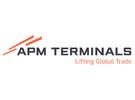In the search for continuous improvement, APM Terminals Moin underwent an internal review of its processes last year, seeking to increase its productivity and efficiency rates. The global container crisis and the impact on supply chains have forced ports and shipping companies around the world to speed up their docking, and unloading processes even further, to reduce the impact on the markets they are serving.
Globally, APM Terminals uses the Japanese Kaizen methodology. This methodology supports the continuous growth of individuals and companies through the elimination of waste in production systems and uses multidisciplinary teams to identify opportunities for improvement.
Continuous Improvement
Under the Kaizen methodology, the APM Terminals team began by reviewing vessel docking protocol and found that idle time was the primary cause of an extended waits of almost two hours. As a result of this situation, the National Council of Concessions, the Ministry of Public Works and Transportation (MOPT Maritime Port Division), Ministry of Health, Central Customs, General Directorate of Migration and Foreigners, National Service of Animal Health and JAPDEVA, worked together to streamline the process of releasing ships docked at the Moin Container Terminal (TCM). The result was a reduction of 45% in vessel idle time at berth, adding capacity and reducing the time of stay of vessels at the terminal.
This new model consists of a coordinated protocol between government authorities and the terminal to enable preparation of port operations while the authorities are releasing the ship, in compliance with the regulatory framework of each institution, and leveraging efficiencies in the process. The commitment made by APM Terminals Moin is to have this protocol ready so that once a vessel docks, both the machinery and the personnel are in place to receive the vessel.
Cost and environmental benefits
In this first quarter, in comparison to 2021, shipping companies gained more than four hundred hours of port stay time for the same level of container volume. Thanks to this change, productivity has increased, savings have been generated for the organizations involved and the environmental impact of operations has been reduced, by allowing shipping companies to reduce their time in port by approximately one hour and the associated reduction in bunker consumption per ship.
“Ships leave the port as efficiently as possible after cargo handling," explained Leonardo Brenes, form the commercial team at APM Terminals Moin. "We work tirelessly to minimize the time between the moment a ship requests docking services and its actual departure. This makes us more attractive to shipping lines and reduces the environmental impact of our operation as much as possible.”
“This new process allows us to better coordinate vessel operations between government institutions, port agents and APM Terminals Moín," says Yadir Murillo, Operations Shift Manager. "This significantly reduces time, while the port agents review the corresponding procedures.”
For more information: 
Ania Blackwood
APM Terminals
Ania.Blackwood@apmterminals.com
apmterminals.com
